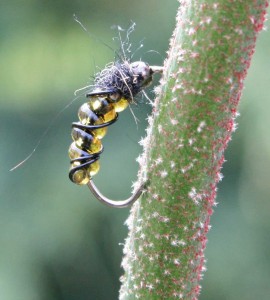
Here is a new ‘go-to’ pattern for the freestone rivers of Tasmania. While I have a preference for fishing the dry-fly, this isn’t always the best approach. This is when I opt to fish a nymph in tandem with a larger, bouyant dry fly, or upstream nymph with the single fly.
A nymph that has proved deadly this season has been our Fastwater Caddis pattern. Originally tied for the fastwaters of Tasmania’s north-east (North Esk, St Patricks rivers), this fly has historically produced for me a few times, but didn’t ever rate as a must-have pattern. That was until this week.
The speedy tail-outs of fastwater slots (the fastwater run-ins at the heads of pools), and the deep bored-out channels found on the outsides of long runs had always under-produced for me on Tasmania’s Mersey River. This caddis grub pattern, fished on a long dropper, has provided the key to succeeding on these sections of water over the last two days of fishing; seven brown trout between 1 and 2lbs, and a wild 2lb rainbow have been proof of its appeal, all fish that have been captured from these previously difficult water structures.
This fly is pretty simple to tie, with the main challenge tying the olive rib body in. Translucent olive rib (medium size) makes the segmented body, secured down with black wire. A black seals fur throat is added, just behind a black tungsten bead, all tied on to a curved grub hook.
The next time you’re on the stream, lift up a few rocks and check out the inhabitants. No doubt, there will be plenty of bright green caddis grubs crawling around.
